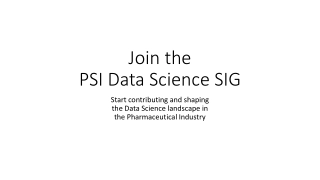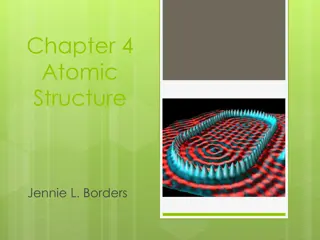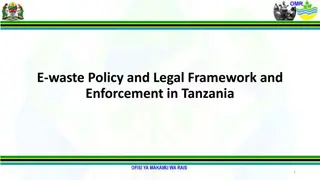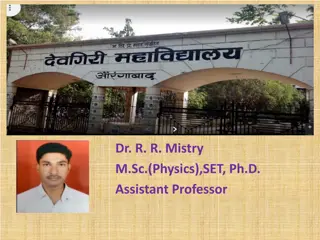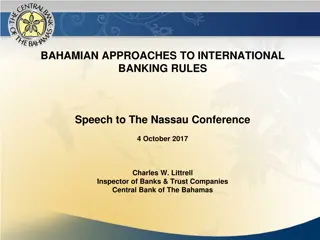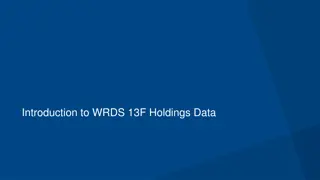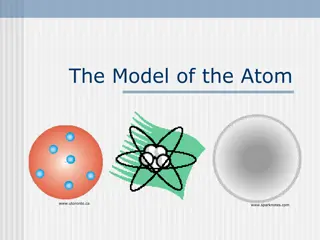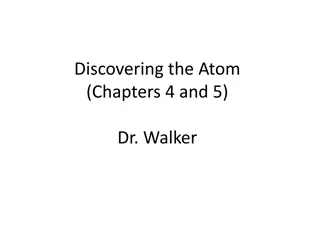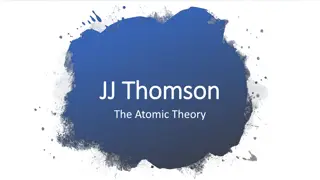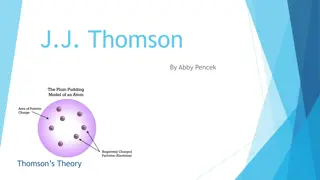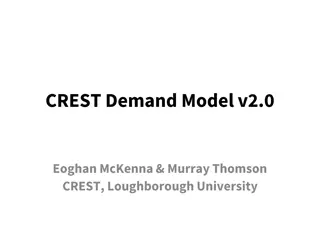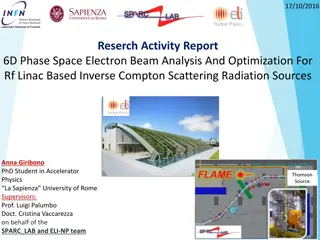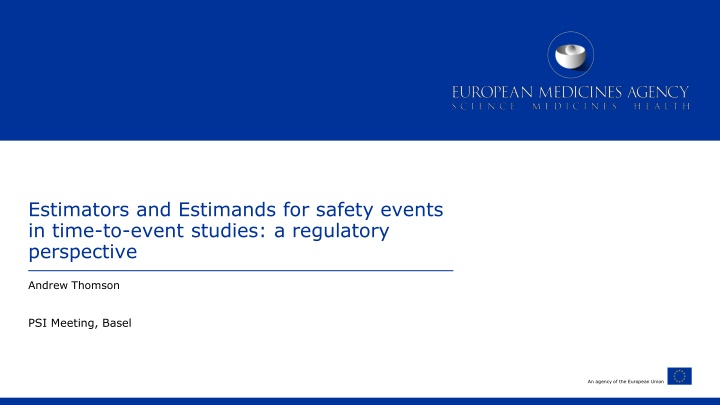
Estimators and Estimands for Safety Events in Time-to-Event Studies
Explore regulatory perspectives on analyzing safety data in clinical trials, challenges in detecting safety differences, and drivers for methodological change. Learn about the impact of treatment switching on outcomes and the importance of proper data analysis in ensuring accurate results.
Download Presentation

Please find below an Image/Link to download the presentation.
The content on the website is provided AS IS for your information and personal use only. It may not be sold, licensed, or shared on other websites without obtaining consent from the author. If you encounter any issues during the download, it is possible that the publisher has removed the file from their server.
You are allowed to download the files provided on this website for personal or commercial use, subject to the condition that they are used lawfully. All files are the property of their respective owners.
The content on the website is provided AS IS for your information and personal use only. It may not be sold, licensed, or shared on other websites without obtaining consent from the author.
E N D
Presentation Transcript
Estimators and Estimands for safety events in time-to-event studies: a regulatory perspective Andrew Thomson PSI Meeting, Basel An agency of the European Union
Why do we analyse and present data the way we do? Because that is what the legislation tells us to Because that is the way we ve always done it 1
Why is safety data different? Trials not powered to detect differences Difficult to prove a negative (the drug is safe) Patients who withdraw from a study can be assumed to have not benefited Missing = Failure is often conservative Impute a conservative value e.g. using placebo mean imputation No reason to assume that patient who has withdrawn had a specific safety event Traditional approach use a per-protocol denominator as more conservative Greater weight applied to estimation than testing 2
Drivers for change understanding methodology Products seemto show a positive benefit, but the risk profile points in the wrong direction Could this just be an artefact of the data, rather than an actual effect? 3
Drivers for change understanding methodology Methods applied in the analysis of adverse events commonly include simple standard methods for contingency tables. However, the results produced may be misleading if observations are censored at the time of discontinuation due to treatment switching or noncompliance, resulting in unequal follow-up periods. 4
How big a problem is it? (1) (Example from Bender et al) Vandetanib has been approved in for adult patients suffering from aggressive and symptomatic medullary thyroid carcinoma with unresectable, locally advanced or metastatic disease. Patients could switch treatment after disease progression. About two-thirds of them switched from the control group to open treatment with vandetanib. Consequently, the median duration of treatment in the vandetanib group was considerably longer than in the BSC group (88.6 weeks vs. 37.1 weeks). estimated relative risk (RR) of 1.87 with 95% confidence interval (CI) [1.01, 3.48] . when survival time methods were used HR = 1.4, 95% CI: [0.74, 2.63] 5
How big a problem is it? (2) (From Bender et al) Abiraterone Prostate cancer (PFS, OS) + AEs / SAEs. The monitoring of adverse events was stopped after treatment discontinuation. In the abiraterone group, this was the case after a median of 13.8 months, whereas in the control group, the median time to disease progression was 8.3 months. This means that the duration of treatment and follow-up differed greatly between the two groups. Estimated Relative Risk of SAEs: 1.28 (95% CI: [1.07, 1.54] p=0.007 Estimated Relative Risk of AEs: 1.02, 95% CI: [1.01, 1.04], p=0.007 The number of adverse events per 100 patient years (1156 in the abiraterone group vs. 1264 in the control group crude RR = 0.915). 6
Drivers for change examples Everything is fine until we are faced with a product that challenges the system The challenge may not be scientific It may not be about the benefit-risk of a drug Communication of the issues is key Audience is used to hearing things a certain way If it looks wrong , need to explain why it is not What is wrong with the old way of doing things Why is this a better way? 7
PAH GL What does it say about mortality? The inclusion of this endpoint in the investigational plan, in particular in patients with severe disease, is strongly encouraged... Any new drug should at least be shown to have no detrimental effect on survival Need to estimate mortality If the true effect is null, the method should (ideally) estimate a null effect Estimation, and not a testing issue Safety issue But oftentimes part of composite endpoint, so efficacy issue 8
Uptravi Results Uptravi used time to first event as analysis Reported all individual endpoints P-value for mortality = 0.087 But clearly a very efficacious drug in terms of the composite endpoint How do we interpret the mortality? Crude OR from this table = 1.61 9
Interpreting mortality Mean and median duration of study treatment in GRIPHON was 70.7 and 76.4 weeks respectively, in the selexipag group, compared to 63.7 and 71.2 weeks in the placebo group- total exposure was 7% higher. Since more morbidity events occurred in the placebo group, more patients at high risk were excluded from further follow-up in the placebo group than in the selexipag group with a consequence that follow-up is shorter in the placebo group and follow- up from more patients that are at higher risk is excluded from the placebo group, resulting in bias. Due to the study design, the risk profile of the patients changed during the course of the study, favouring placebo group at the end of the trial despite of randomization. This is consistent with the observation that the imbalance did not emerge before month 18. 11
Conclusions The more effective a drug is on the rest of the components, the worse it looks for mortality, as measured by the Odds Ratio We need to describe this properly Links exactly with work of Proctor & Schumacher, and Bender et al Motivated in an entirely different indication, for different stakeholders Safety and efficacy have become blurred Mortality is part of efficacy endpoint, but now needs to be thought of as safety Where else has this arisen? 12
Drivers for change Guideline Revision Cardiovascular studies ACS GL (published June 2018) Even though cardiovascular death is an adequate clinical outcome that reflects the disease process targeted by treatments for ACS, all-cause mortality may in many cases be the preferred choice. The use of all-cause mortality as an endpoint (or as a component of a composite endpoint) simplifies statistical analysis since all deaths are treated as events rather than non-CV deaths needing to be handled through a statistical model with associated assumptions and risks of bias. This is of specific importance in trials when the expected incidence of non-cardiovascular mortality is difficult to predict. 13
Drivers for change Guideline Revision Including Non-CV mortality: Is it an important problem or not? Yes? Then important that it is included in the endpoint No? Then it shouldn t matter if it is included in the endpoint 14
An important aside - labelling EU way of thinking: The label (specifically section 4.1) indicates the patient population who will have a positive benefit-risk balance We don t label endpoints US way of thinking: It is a legitimate aim of the label to describe to prescribers what the drug is expected to do EU Corollary: Patients don t care why they die, they care that they die Non-CV mortality could/should be part of the primary endpoint US Corollary: If no effect is expected on non-CV mortality, why would you include it in your primary endpoint 15
Learning from the Guideline development Things happen (e.g. non-CV death) that we need to think about how we handle carefully Often terminal events Standard Cox PH models may not always be the best way of analysis We can either consider it as censored, or as an event Or we can impute a new time value But this does not make sense the probability of dying from a CV event after having died of a non-CV event is 0 massively informative censoring Here s what we would have observed had they not died of a non-CV death? Estimand framework gives a good way of describing the problem 16
Estimand Framework An estimand defines the target of estimation for a particular trial objective (i.e. what is to be estimated ) The description of an estimand will not be complete without reflecting how potential intercurrent events are addressed in the scientific question of interest. Events that occur after treatment initiation and either preclude observation of the variable or affect its interpretation Intercurrent events have the potential to occur after treatment initiation and either preclude observation of the variable or affect its interpretation, e.g. use of an alternative treatment, perhaps a rescue medication discontinuation of treatment terminal events such as death 17
Estimand Framework Study discontinuation, loss-to-follow-up or other missing data are not intercurrent events and are not reflected in the estimand, but instead represent limitations to the data to be addressed in the analysis Different strategies are available for how to address potential intercurrent events to reflect the scientific question of interest With an agreed estimand, and a pre-specified statistical analysis that is aligned to that estimand, sensitivity analysis can focus on sensitivity to deviations from assumptions in respect of a particular analysis, rather than sensitivity to the choice of analytic approach 18
Estimand Framework Various strategies are named Treatment policy, composite, hypothetical, principal stratum, while on treatment Historically, treatment policy has been of most regulatory interest (explicitly mentioned in ICH E9) Motivation for studies with fixed periods of observation Imputation clear Less clear for time-to-event What and how do we impute Work ongoing for efficacy endpoints 19
Estimation Once we have decided on our estimand, we need to estimate it Good if we can do this in an unbiased fashion Historically, acceptable if we can estimate it with a bias that only goes against the product However, as PAH example shows, this is not good enough if we need to rule out raised safety risk If we can t, raises two alternatives Estimate another estimand in an unbiased fashion Accept the bias easier said than done when talking about mortality! 20
Sources of bias Algebra If you follow one randomised group for longer, you get more events. So the Odds Ratio is not a good estimate of the risk Informative Censoring Patients who have the competing event are more likely to have subsequently died, than those who had not had the event Time to death as a first event is may not be a good measure if this is true. Remove worst patients from control arm risk set Crossover Difficult to adjust for case-by-case basis depending on results 21
Informative censoring More than one way to describe what it is Definition for now: The distribution of the event of interest is different after the censoring event than it was before Aligns nicely with the estimand framework Gives us a language to describe what the problem is, and how to request analyses that would satisfy regulators Move from censoring intercurrent events Or even from censoring intercurrent events + censoring events 22
Language matters! Now have a language to describe intercurrent events / censoring Those at the end of the study administrative censoring unlikely to be informative censoring No reason to believe the distribution has changed before and after the censoring event Other subjects who are censored before the end of the study (may) have an intercurrent event but we have a missing data problem Describe what happens after the intercurrent event, using different distributions Aim is to make sure the estimand is a relevant one Side effect automatically deals with informative censoring Properly applied, the estimand framework makes informative censoring problems disappear 23
Bringing it all together Safety Statistics Guideline Development Estimand Framework Better Better assessment of TTE studies in general understanding of TTE issues 24
Where next? Clear understanding of how estimation methods and estimands align What estimands does a particular method estimate? Is the estimand zero when it should be? Who cares about this estimand? Are we doing what we are doing because we are wedded to the Cox Model? Are there alternatives? What estimand do they target? What assumptions do they make? Can these assumptions be tested to see whether they are true? Are there sensitivity analyses to test the strength of departure 25
What features should new methods have? They must allow both testing (p-value) and estimation (point estimate) Confidence Interval construction is a benefit Assumptions behind the model need to be clear If not testable, suitable sensitivity analyses need to be developed Need to be able to account for informative censoring At least through sensitivity analyses Be able to handle crossover would be a huge benefit 26
How does this help with safety? Intercurrent events, particularly if terminal / absorbing or impacting differentially (i.e. to a different degree on treated and control patients) on duration of observation by other mechanisms, cause obvious problems with the independent interpretation of treatment effect estimates for differences in recurrent events. None of these (methods) directly offers an opportunity to model terminal intercurrent events In that context, it might be possible to support the use of approaches to analysis such as NB and LWYY, but only in situations where there is well established knowledge that the effect on the terminal event is not negative. Same issues I outline today remain unresolved 28
Final conclusions Lots of drivers around on how to think about time-to-event studies Analysis and communication Lots of regulatory thinking has gone into this Still remain unanswered questions Methodological work needs to be ongoing Come to regulators with good methodology Estimand framework gives a good way of describing this Everything is harder with time-to event 29
Any questions? Further information andrew.thomson@ema.europa.eu Temporary visiting address Spark building Orlyplein 24 1043 DP Amsterdam The Netherlands For deliveries refer to www.ema.europa.eu/how-to-find-us Send us a question via www.ema.europa.eu/contact Telephone +31 (0)88 781 6000 Follow us on @EMA_News

